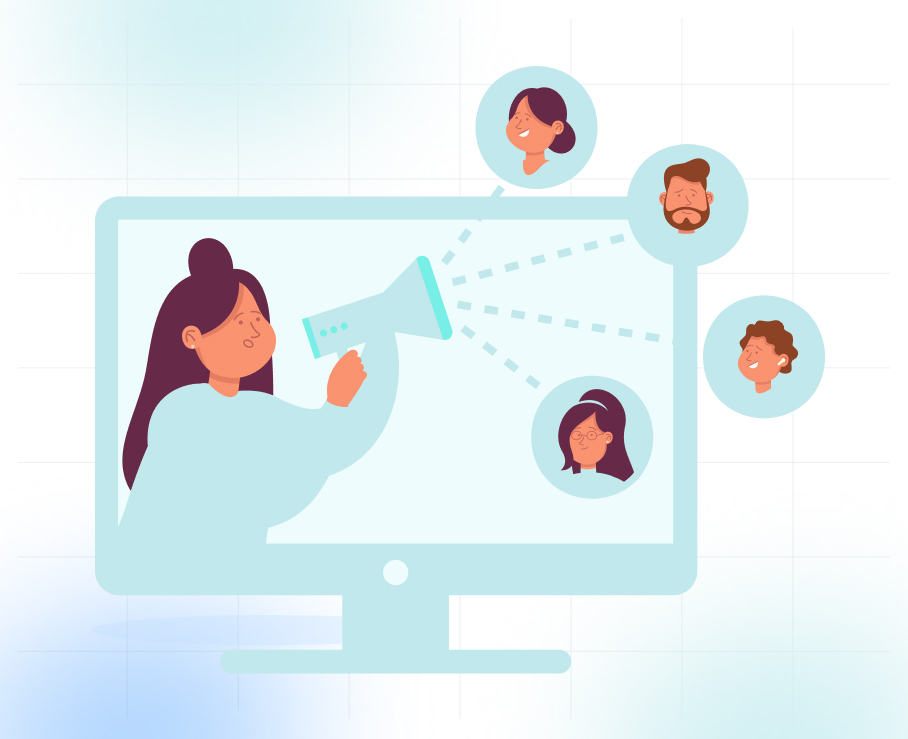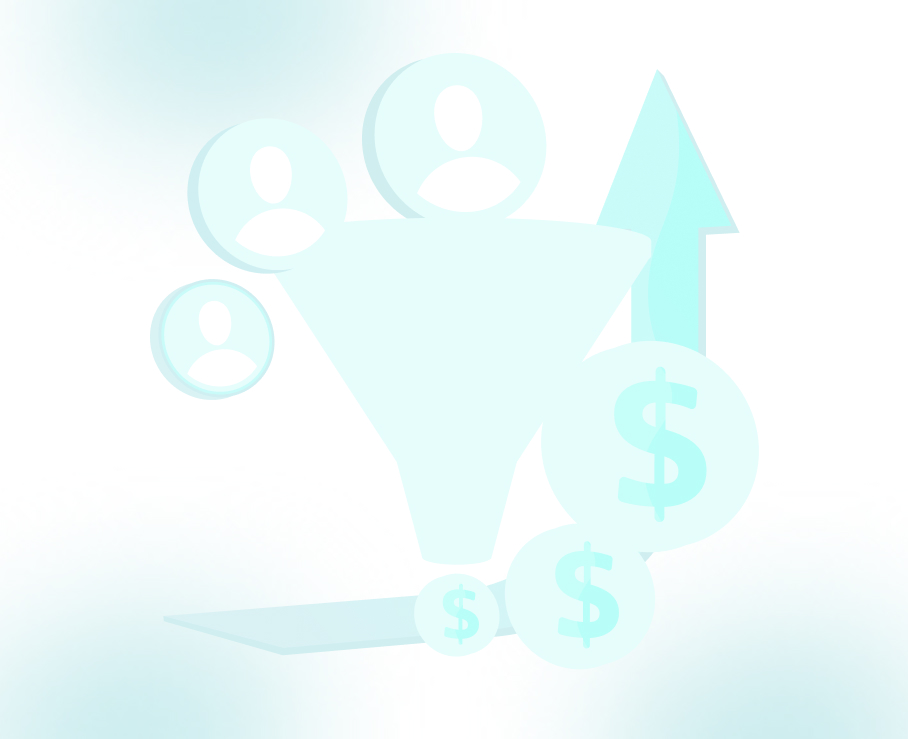
Warm Leads Explained: How to Identify and Nurture High-Quality Prospects
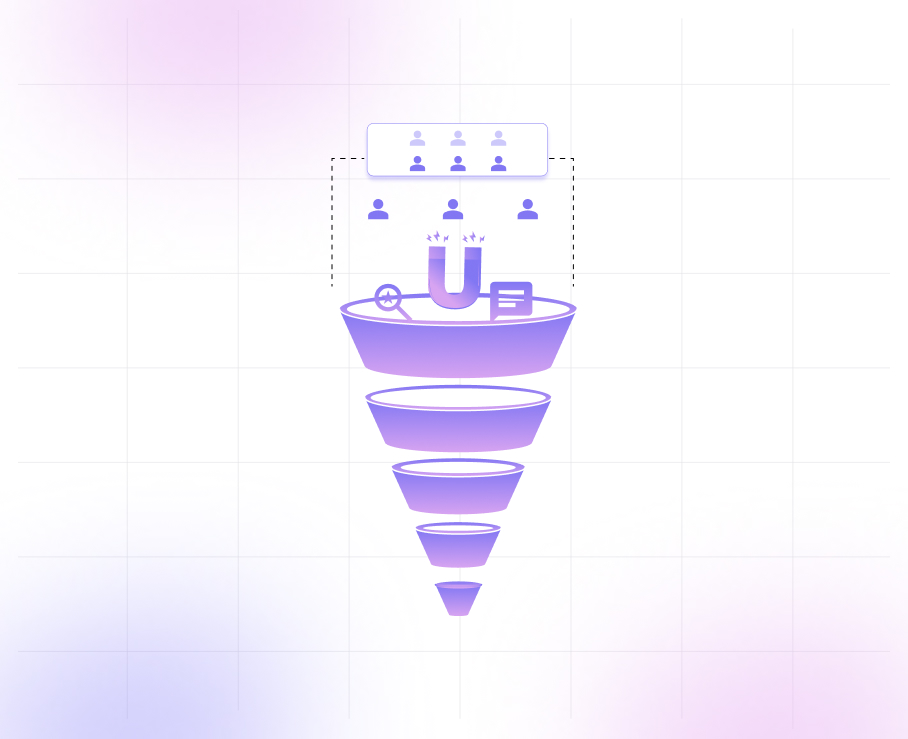
Sales slow down when you chase the wrong leads. Not everyone’s ready to buy, and treating every lead the same wastes time and energy.
That’s where warm leads come in.
These are people who already know who you are. Maybe they’ve visited your site a few times, opened your emails, or asked a question in a demo. They’re not just random names on a list; they’ve shown some interest, even if they’re not ready to sign today.
Understanding the difference between cold, warm, and hot leads matters more than ever. This guide breaks down how to identify warm leads, how they behave, and how to turn that early interest into real conversations and eventually, sales.
Key Takeaways
- Warm leads know your brand and have interacted with your content, emails, downloads, or site visits.
- They sit between cold and hot, interested but not ready to buy.
- They’re faster to convert and cheaper to close than cold leads.
- Real interest shows through behavior like return visits, pricing page clicks, or asking questions.
- Relevance matters; don’t push demos too early. Offer content or conversations that match where they are.
- Email works best when it’s short, clear, and timed well, not part of a noisy sequence.
- Track what they do, not just who they are—recent clicks, downloads, or forwards matter more than static profiles.
- Stay consistent—if they pause, follow up without pressure. Most leads don’t go cold; they just take time.
- TLM supports this process by helping companies run focused campaigns and book meetings with leads showing real intent.
Why Leads Matter in Sales and Marketing
High-quality leads are a time-saver. They help distinguish genuine interest from background noise. While it’s easy to generate clicks through advertising, those interactions rarely translate into revenue without a clear sign of intent.
A lead is more than just a name or an email address; it represents someone who may have a real need for your product or service. But that potential only matters if the lead is managed with the right approach.
In B2B sales and marketing, focus is essential. Treating all leads the same—regardless of where they are in the buyer’s journey—is inefficient. Understanding who is simply aware of your brand, who is actively exploring solutions, and who is ready to make a decision is what keeps your pipeline moving steadily.
Warm leads, in particular, sit in a critical middle ground. They are not unfamiliar with your brand, nor are they fully committed. They are paying attention—and that makes them a group worth prioritizing.
Read: Ultimate Lead Qualification Checklist: Convert More Sales in 2025
What Is a Warm Lead?
A warm lead refers to an individual or organization that is already aware of a brand and has demonstrated some level of interest, but has not yet taken a direct step toward a purchase or formal inquiry.
This interest may be reflected through actions such as:
- Subscribing to a newsletter
- Opening or clicking through marketing emails
- Following the brand on social media
- Downloading resources such as whitepapers or guides
- Attending webinars, virtual events, or workshops
Unlike cold leads, warm leads do not require brand introduction. There is existing awareness and curiosity, though the intent to purchase is not yet clear. At this stage, they are often gathering information, weighing options, and observing how a product or service aligns with their needs.
Warm leads are particularly valuable because they have already entered the consideration phase. Initial engagement has occurred, which means that some groundwork is in place. The next step is not to initiate a hard sales push, but to offer relevant information, timely responses, and content that aligns with their current level of interest.
Rather than relying on scripts or pressure tactics, the focus should be on continuing the dialogue with clarity, credibility, and value.
Understanding Cold, Warm, and Hot Leads: Key Differences That Shape Outreach
Leads are often grouped into three buckets: cold, warm, and hot. Here’s a clearer breakdown that focuses on what makes warm leads different:
Warm leads are already familiar with the brand and have shown clear interest through prior engagement. They are closer to making a decision than cold leads but still open to influence. Prioritizing this group allows for more targeted communication, where timely follow-up can move them further down the pipeline without starting from zero.
Read: A Beginner's Guide to Organic Lead Generation Strategies
Key Benefits of Targeting Warm Leads
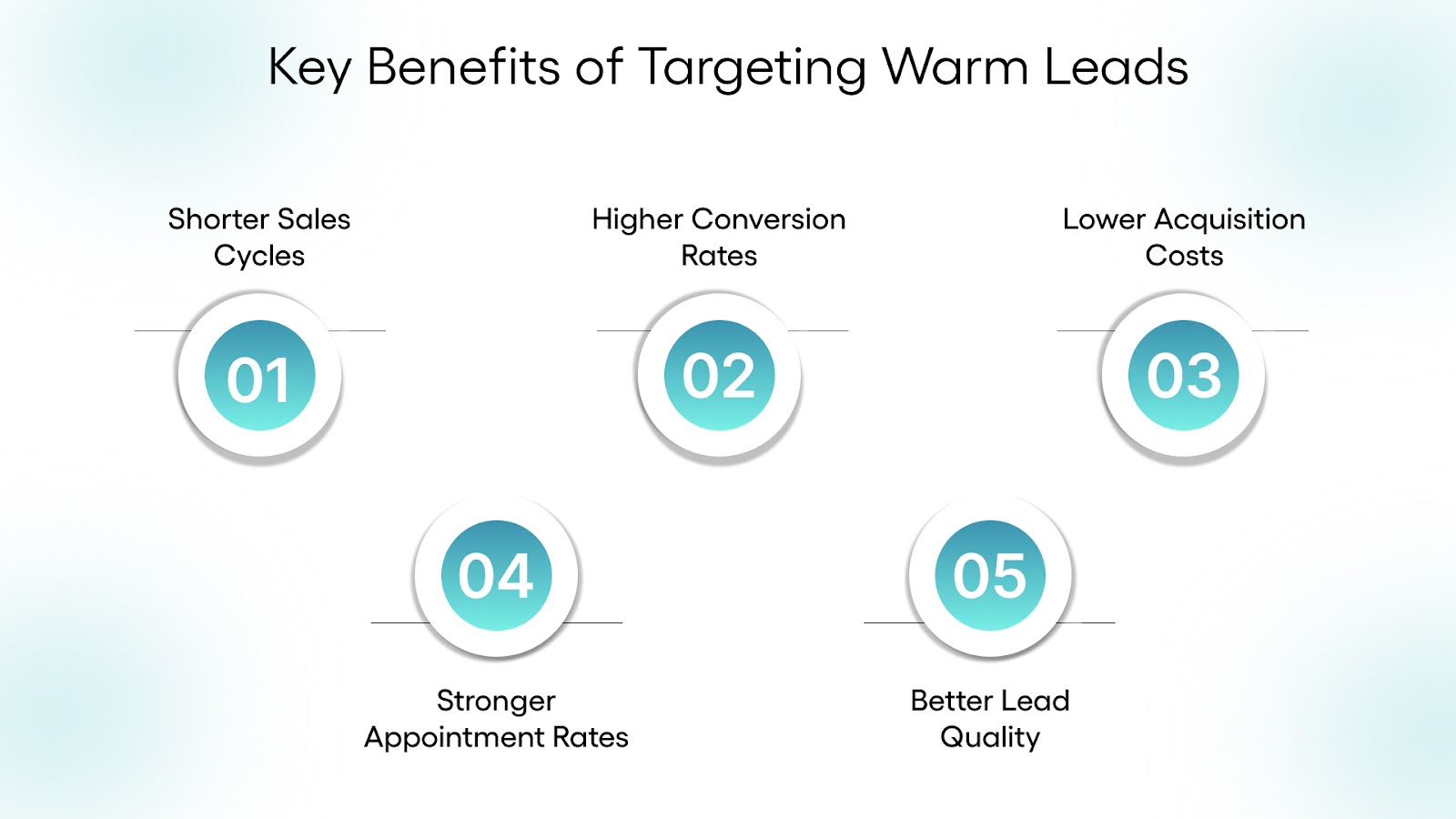
Warm leads already recognize the brand and have interacted in some way. This makes them more responsive, faster to engage, and often more qualified than cold prospects.
- Shorter Sales Cycles
Less time is needed to explain the product or build awareness, which speeds up decision-making. - Higher Conversion Rates
Warm leads are more likely to respond and take action, resulting in better close ratios. - Lower Acquisition Costs
Fewer touchpoints and quicker engagement reduce the time and resources spent per lead. - Stronger Appointment Rates
Leads are more open to scheduling calls, leading to fewer no-shows and better-qualified meetings. - Better Lead Quality
Their prior actions (downloads, event attendance, etc.) help pre-qualify them for fit and intent.
Warm leads don’t need convincing, they need clarity. Focusing on them brings faster outcomes and a better return on sales effort.
Key Indicators That Define a Warm Lead
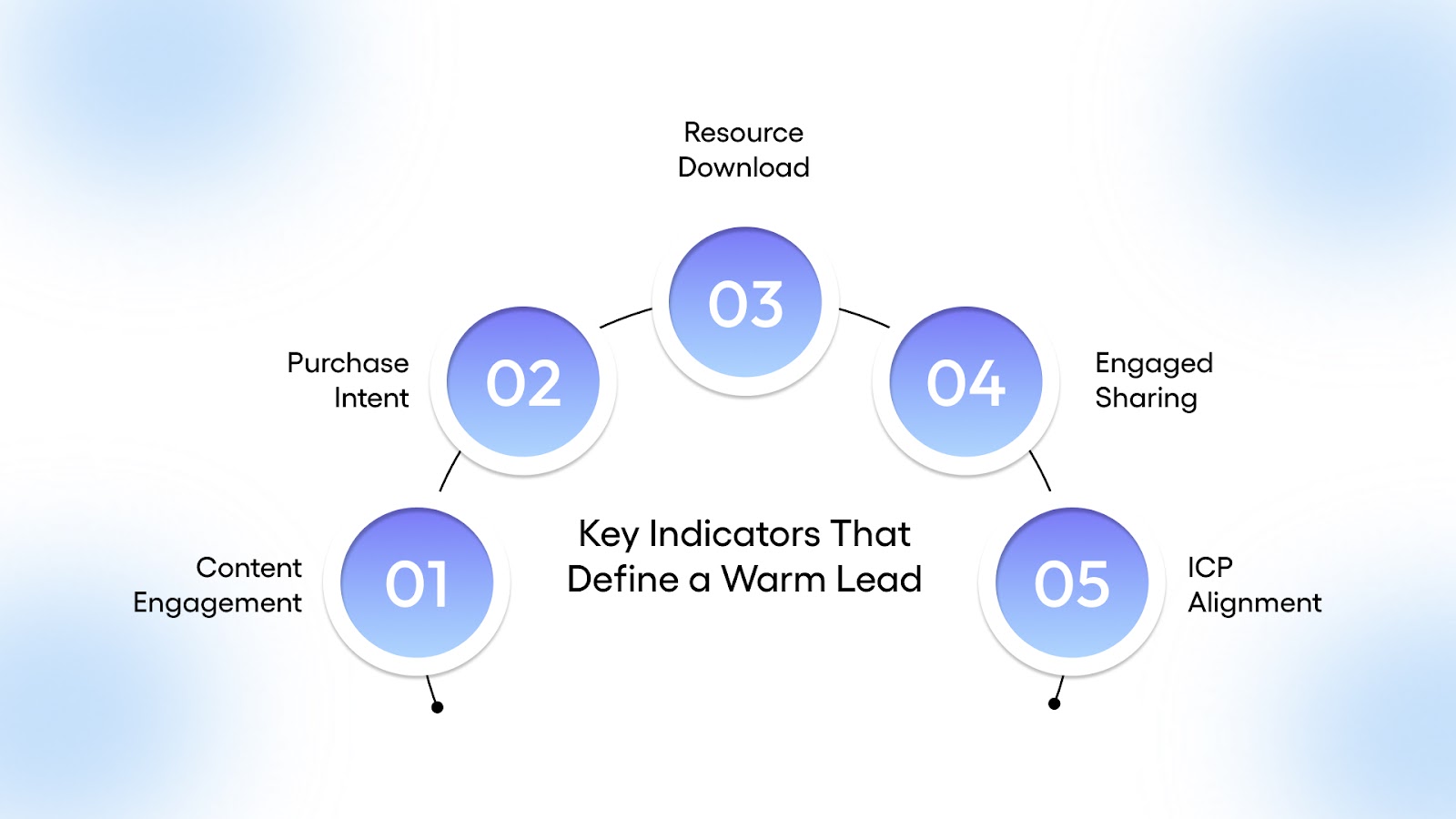
A warm lead isn’t defined by a single click or visit. It’s a pattern of informed actions that show clear intent. These indicators, when viewed together, signal that a lead has moved beyond surface-level awareness and is actively exploring.
1. Repeated Engagement With Content
Multiple interactions across different channels, opening emails consistently, clicking through to high-value pages, or engaging with product-related videos, suggest sustained interest, not accidental activity.
2. Website Activity Focused on Buying Signals
Visits to pricing pages, product features, case studies, or comparison content point to serious evaluation. Warm leads often return to these pages after engaging with emails or other outreach.
3. Downloading Mid-Funnel Resources
When a lead downloads assets like whitepapers, buyer’s guides, case studies, or attends a webinar, it reflects intent to research, not casual browsing. These actions show they're weighing options.
4. Responsive and Share-Forward Behavior
Replying to emails, asking clarifying questions, or forwarding a message to a colleague is a strong trust signal. These behaviors often mark internal discussion or early-stage buying conversations.
5. Alignment With Ideal Customer Profile
Even with strong engagement, lead fit still matters. If the lead matches key criteria, such as role, company size, industry, or use case, they’re not just warm, they’re viable.
Warm leads are identified through behavioral signals (multiple engagements, interest in core content) paired with contextual fit (right role, right company type). The goal is to look for consistency, actions that reflect research, evaluation, or early decision-making, not just passive awareness.
How to Move Warm Leads Toward Conversion: 9 Real Strategies That Work
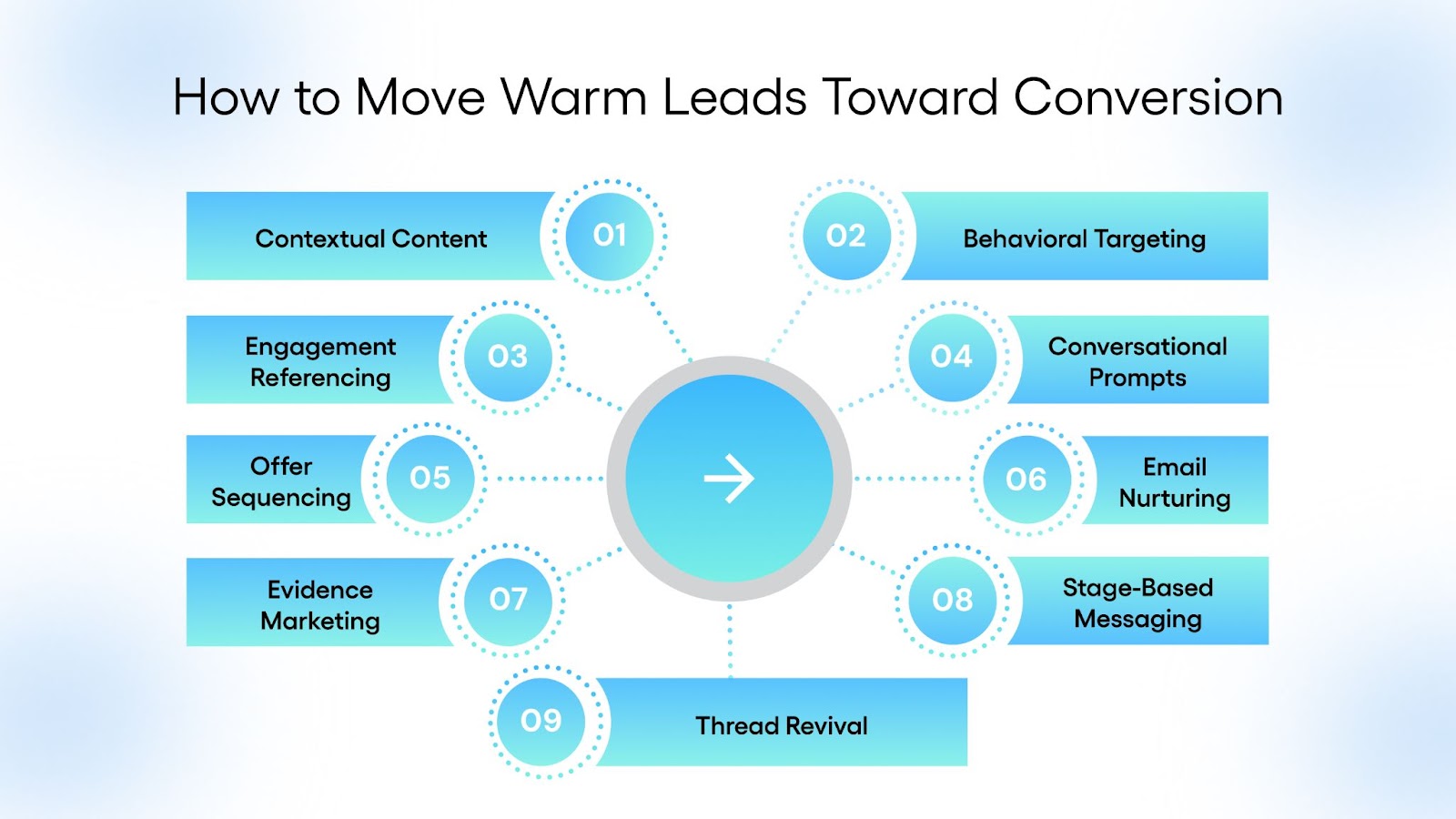
Warm leads aren’t waiting for a pitch; they’re waiting for clarity. They’ve seen enough to care but need something specific to move. These strategies help keep that momentum alive without overplaying your hand.
1. Create Content Built for Their Moment, Not Just Awareness
At this stage, leads don’t need top-of-funnel fluff. They’re looking for answers that feel tailored to the decision they’re weighing.
- Think implementation timelines, cost comparisons, and industry-specific use cases.
- Break down the process: “What happens after I book the call?” is a more common concern than most marketers realize.
2. Follow the Behavior, Not Just the Lead List
Patterns matter more than profiles. A lead’s actions reveal more than a form field ever could.
- Repeated visits to pricing or FAQ pages.
- Clicking links late at night or multiple times in one week.
- Ignoring three emails, then suddenly opening one and visiting your site.
Tip: Use this behavior to prioritize outreach — warmth isn’t static; it cools without a response.
3. Refer to What They’ve Already Engaged With
Generic follow-ups signal laziness. Warm leads respond better when the message connects directly to their actions.
For example:
“Since you downloaded the implementation guide last week, I thought this short walkthrough might help clarify what happens post-onboarding.”
This doesn’t just build trust, it shows you’re paying attention. In a crowded inbox, that stands out.
4. Ask Questions That Invite a Real Reply
The right question can unlock a part of the conversation that a lead wasn’t ready to bring up on their own.
Ask:
- “Where does this project stand internally?”
- “What’s missing from the options you’re comparing?”
- “Are you the main person driving this, or is someone else weighing in too?”
These questions open space for the lead to tell you where they are.
Read: Definitive Guide to B2B Lead Generation Strategies
5. Let Smaller Offers Do the Work
Not everyone is ready to 'book a demo' or 'schedule a meeting', and pushing for it too soon can kill momentum.
Instead, try:
- A 3-minute video tour of one feature
- A quick Q&A call framed as a checkpoint, not a pitch
These smaller steps lower pressure and keep engagement alive without asking for a commitment.
6. Use Email to Maintain Quiet Consistency
Email works best when it feels like presence, not pursuit.
Tips:
- Send when it makes sense, not just because the sequence says so.
- Keep it short. One useful link or one thoughtful sentence often outperforms three paragraphs.
- Don’t disappear after a few ignored messages; most people are busy, not uninterested.
Even a two-line check-in, sent a week after their last click, can reopen the loop if the timing’s right.
7. Build Trust with Tangible Wins
Anyone can say they’re the best. Warm leads want to see it.
Share:
- A stat tied to a real result
- A short client quote that mirrors the lead’s current problem
- A quick line: “You might find this familiar”, then link to a relevant customer story
This kind of proof shows credibility through real outcomes, making your message more believable and relevant.
8. Match the Message to Their Buying Stage
Don’t send a pricing sheet to someone still figuring out the use case. Don’t send a setup guide to someone who’s asked for nothing.
Track what they’ve seen or downloaded. Then ask:
“What would be most useful right now?” and deliver that.
Warm leads don’t mind helpful outreach; they mind irrelevant outreach.
9. Follow Up Without Losing Touch
Leads don’t always go cold. Sometimes they just pause.
When that happens:
- Wait a respectful amount of time (7–10 days works well).
- Circle back with a message that feels human:
“Still on your radar?” or “Should I close this out for now?” - Keep the door open without pressure.
Warm leads live in a fragile middle space, interested but not ready, informed but still weighing options. The difference between a sale and a dead thread often comes down to patience, timing, and the right message at the right moment. These nine moves aren’t about pushing; they’re about staying in the room just long enough for the lead to ask the next question.
How a BPO Firm Repaired Its Outreach and Closed Its Second-Largest Deal
A Pennsylvania-based BPO company offered strong back-office solutions and had a capable internal sales team. But they struggled to generate qualified leads. Past efforts with outside agencies had fallen short, and their own email campaigns had created brand concerns, causing spam issues and damaging credibility.
To address this, they shifted to a more targeted approach. TLM designed a focused email strategy that:
- Prioritized industries where the client had proven success, like insurance and financial services
- Highlighted their operational strengths and recruitment process, not just generic capabilities
- Used clean messaging and careful targeting to avoid the pitfalls of previous campaigns
A dedicated team managed outreach and responses, passing only relevant leads to the sales team.
- Within the first six months, interest grew steadily
- In month seven, they closed a significant deal
- Two additional deals followed by the end of the year
The campaign restored trust in their outreach efforts, improved traffic to their website, and established a steady flow of qualified leads. The client has since expanded the program, continuing to build on what’s working.
Want to Turn Interest Into Qualified Appointments?
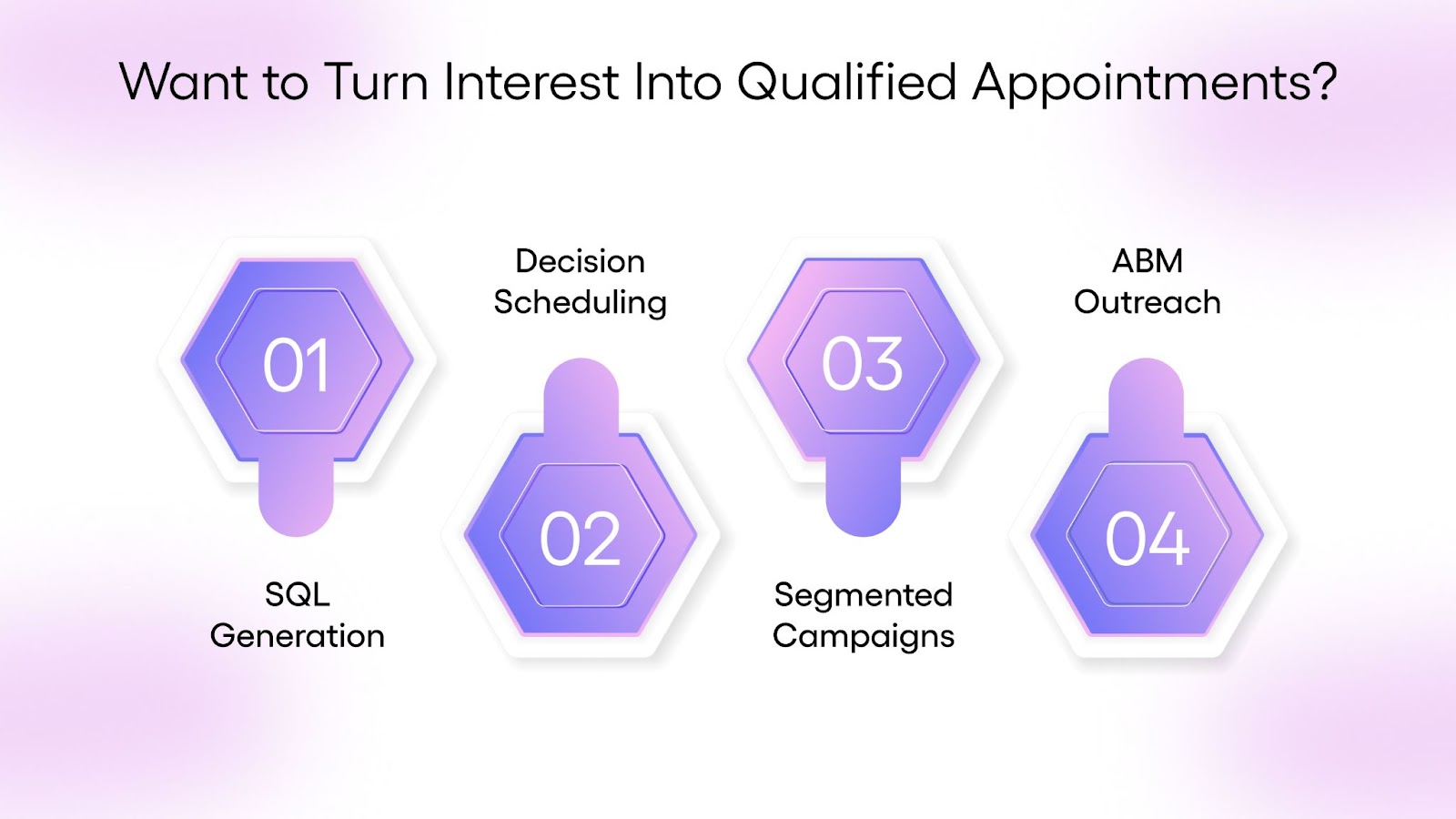
If warm leads are opening your emails but not moving forward, the issue likely isn’t interest; it’s how that interest is handled. TLM works with MSPs, staffing firms, software service providers, and warehousing companies that need more than just contacts. The goal is steady, qualified conversations with real decision-makers, and a pipeline that doesn’t stall after step one. From lead generation to booking meetings, everything is built around getting the right people into the right conversations at the right time.
Here’s what that looks like:
- Sales-Qualified Lead Generation
Not just contacts, but real prospects showing intent—identified through behavioral signals, company fit, and direct engagement. Every lead is vetted before it reaches you. - Appointment Scheduling With Decision-Makers
Once interest is confirmed, TLM handles the back-and-forth: coordinating calendars, confirming details, and getting key stakeholders on your schedule, so you can focus on the call, not the prep. - Targeted Campaigns by Industry, Role, or Service Line
Campaigns built to reach people who actually care about what you do. Whether it’s CFOs in logistics or IT leads in healthcare, each campaign is shaped around the language and pain points that resonate. - Account-Based Outreach to High-Priority Prospects
When a one-size-fits-all message won’t cut it, TLM builds highly specific outreach for the accounts that matter most, past contacts, strategic logos, or niche verticals you want to break into.
If you're ready to stop chasing cold leads and start building a stronger pipeline from interest to action, let’s talk.
Final Thought: Leads Are People, Not Pipelines
Warm leads sit in a narrow window. They’re not ready to buy, but they’re not ignoring you either. That makes timing essential. Most teams waste effort by treating every lead the same.
Real progress comes from small shifts, clearer messaging, smarter follow-ups, and knowing when not to push. This isn’t about more leads. It’s about better ones. If your current outreach isn’t turning attention into conversations, the issue may not be volume. It might be how and when you’re showing up.
That’s where companies like TLM help: bringing structure to outreach, clarity to targeting, and consistency to lead flow. Because when a warm lead shows interest, the right reply can make the difference between silence and a sale.
FAQs
1. What does a warm lead mean?
A warm lead is someone who has shown interest in your product or service, they know who you are and may have engaged with your brand, but haven’t committed yet.
2. What is the difference between warm and cold leads?
Cold leads haven’t interacted with your brand yet, while warm leads have shown some level of interest or engagement, making them more likely to convert with the right follow-up.
3. How to find warm leads?
Warm leads often come from your existing network — website visitors, newsletter subscribers, referrals, or past prospects. Nurture them with content, check-ins, and timely follow-ups.
4. How to deal with warm leads?
Keep it personalized and value-driven. Respond quickly, tailor your message to their needs, and guide them without pressure. The goal is to build trust, not to rush the sale.


